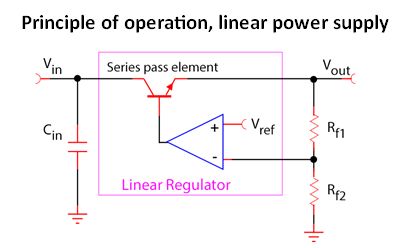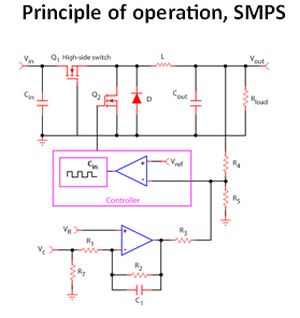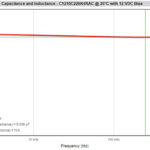There are some uses that demand the low noise and fast response only available through traditional linear supplies.
ALEX KARAPETIAN | ACOPIAN TECHNICAL CO.
ASK almost any engineer about linear power supplies and the likely instinctive reaction will be, “Sorry, I can’t use them — they’re too inefficient.” Any possibility of using a linear supply usually ends right there; it is as though you’re asking them to go back to vacuum-tube AM radios.

Still, a good engineer knows that it’s wise to not make decisions based on assumptions and clichés, but rather on honest assessments of priorities and alternatives. This maxim also applies when deciding between a switching or linear power supply. Like many engineering decisions, this one depends on the specifics of the application, the features and functions it needs, priorities, and acceptable tradeoffs.
First a quick review of the basics. A linear power supply first converts the high-voltage ac from the line into lower-voltage ac using a transformer. It then converts the low-voltage ac into an unregulated dc voltage via a rectifier and capacitor filters. An error amplifier with a voltage reference as one input and the output dc as the other controls a series-connected pass element. The error amplifier compares the reference to the output and regulates the output voltage by dropping excess voltage in the pass element, hence the designation “linear” supply.

This closed-loop design ensures the supply output stays at the nominal voltage despite changes in supply line or load values. The downside of this arrangement is that the pass element is always in its active region. It dissipates power regardless of the power it is also delivering to the load; this is the major source of inefficiency in a linear supply.
Now consider a line-powered switching supply. Here, the line ac is usually first converted to unregulated dc (again, via a rectifier and filter). Then the supply regulates that dc voltage down to the desired voltage. There are many topology variations of the switching concept, but all have a similar underlying principle. Again, an error amplifier compares the regulator output value to an internal reference, but here the pass element is rapidly switched on and off with a pulse-width modulation or pulse-frequency modulation scheme.

The output pulses are filtered to form low-ripple dc and the resulting waveform becomes the dc voltage output. Because the pass element is either completely on or off, it is always in a mode where its dissipation is minimal. The main losses arise from the series on-resistance when the pass element conducts and switching losses as it transitions between on and off states.
LINEAR VS. SWITCHING SUPPLIES
The typical linear supply has an efficiency of about 20% to 40%. This figure pales in comparison to the efficiency of a typical switching supply which comes in at 60% to 80% and can reach 90% in some cases.
There are also major differences in size and weight. The switching supply is much smaller and lighter, largely because of the smaller transformer, discrete semiconductors, and passive components. For example, a 250-W linear power supply would require 600 in3 (a little under 9,000 cm3) of mounting space and would weigh 26 lb. (about 12 kg). A comparable ac/dc switching power supply could occupy one-tenth that volume and weigh just 2 lb. (0.9 kg).
The size of the switching supply is also a function of its switching frequency, ranging between a few hundred kilohertz for larger supplies to as high as a few megahertz for those supplying less power. Operation at high frequencies permits the use of smaller passives and reduces the overall footprint although overall efficiency will drop because of higher switching losses.
Why would an engineer even consider a linear supply with its lower efficiency, larger size and higher weight? Here, noise on the dc output and transient response come into play.
The linear supply is a continuous-function unit with no discrete time clocking or switching action. The linear supply itself does not generate any EMI or RFI. As a result, its output is virtually free of any noise and ripple. Any noise at the load arises outside the supply itself from pickup in the power wiring between the supply and load. Chokes and other filter components as well as careful cable routing can attenuate this noise.
In contrast, the switching supply is inherently a source of noise. Its output contains a fundamental at its clock frequency as well as numerous harmonics. Typical noise levels are on the order of hundreds of microvolts to tens of millivolts. These levels are unacceptable for many applications where the output voltage is at single-digit levels or the load is sensitive to supply rail noise.
Switching-based noise can be filtered to some extent but is difficult to eliminate entirely. In addition to generating noise on the output cables, the supply also radiates noise which can induce unexpected and frustrating problems elsewhere in the system. While filtering can attenuate the output noise to acceptable levels, the problem of radiated noise is much more difficult to manage.
Further, the frequency of the switching-induced noise may interfere with other clocked signals, resulting in beat frequencies and other interference. To head off such difficulties, the switching supply’s clock frequency may need to be synchronized with the system clock.
In addition, there are increasingly stringent regulatory limits on the amount of noise a power supply can generate in different frequency bands, both as a function of power supply wattage and global location. Some switching supplies meet the regulatory mandates by using spread spectrum clocking to spread the noise energy across a wide band. This way, the noise does not exceed allowed limits at the clock frequency or its harmonics. While this technique works in the “legal” sense to meet mandatory standards, the supply noise can still affect internal system circuitry.
TRANSIENT RESPONSE
There is also the issue of transient response to sudden changes in load. The all-analog linear supply can be tuned to optimally respond to step-changes in load. The goal is to respond fast without overshoot or ringing, and a properly designed supply can provide this. In contrast, the closed-loop dynamics of the switching power supply are much more difficult to control. The switching supply may be slower or excessively overshoot and ring before it stabilizes, depending on design specifics and clock frequency.
There is no doubt that the switching supply offers major benefits in efficiency, weight and size. But before assuming it is the right or only choice, engineers should consider the application as well as the impact of noise and ripple. There are installations where these attributes are not the priorities; instead, low ripple and output noise are the top priorities along with superior transient performance. Applications in this category include extremely low-noise amplifiers, advanced signal processing and data acquisition systems (including sensors, multiplexers, A/D converters and sample and hold circuits) and precision automatic test equipment (ATE) and laboratory test equipment.






Leave a Reply